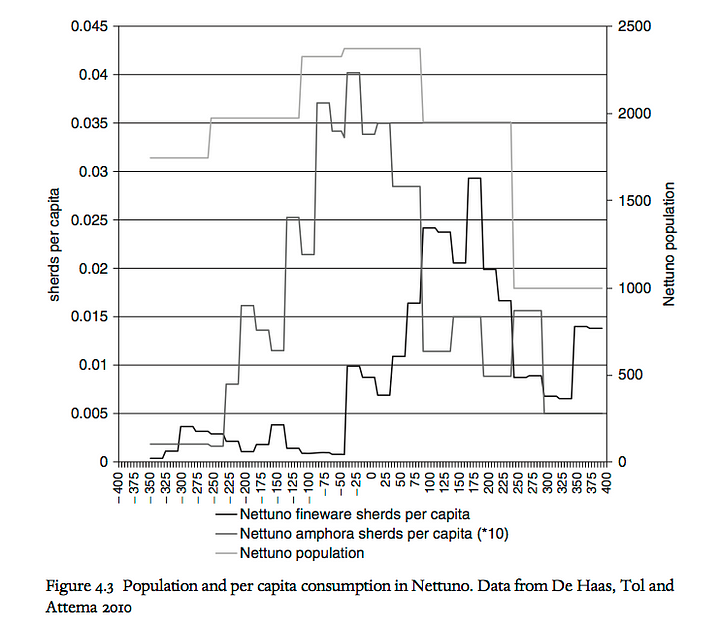Readers who have been with us for a while, and other pros, know most of this stuff but it's nice to have it wrapped up in a compact little package.
I owe someone a hat tip on this but can't recall who had it first, when I do I'll add the HT.
In 2008, Jeremy Neuner and Ryan Coonerty, two city-hall employees in
Santa Cruz, California, decided to open a co-working space. They leased a
cavernous building a few steps from a surf shop and a sex-toy boutique,
and equipped it with desks, power strips, fast Wi-Fi, and a deluxe
coffee-maker. Neuner and Coonerty named their company NextSpace
Coworking.
Neuner, who had attended Harvard’s Kennedy School after serving in
the Navy, was looking to be part of a movement. “We really believed that
this would be a totally new way of working,” he told me. NextSpace
provided a refuge for local freelancers desperate for office
camaraderie, and within six months the company was turning a small
profit. Soon, NextSpace opened locations in San Francisco, Los Angeles,
and San Jose. Neuner and Coonerty also started looking for venture
capital. They had raised some money from family and friends, but, as
Neuner put it to me, “V.C. funding is the stamp of approval.” He noted,
“In every startup story, the V.C.s supercharge everything. They’re the
fairy godmothers of success.”
In 2012, Neuner went to a co-working-industry conference, in Austin,
Texas, to appear on a panel and try to meet investors. One of the
conference’s other speakers was Adam Neumann, a six-foot-five Israeli
with flowing black hair, who wore designer jeans and a dark blazer—fancy
dress amid the crowd’s T-shirts. Neumann told the audience that he ran a
company in New York, named WeWork, that was “the world’s first physical
social network.” His self-assuredness was mesmerizing. “We’re planning
to be all over the country very, very soon,” he said. Although WeWork
was just two years old, and Neumann was only thirty-two, the company
already controlled more than three hundred thousand square feet of
office space; he declared that WeWork would soon have ten thousand
clients. “Our company is about we and about collaboration,” Neumann proclaimed. “Together, we can build a community that can change the world.”
When Jeremy Neuner began having meetings with venture capitalists, he
said, “their first question was ‘How do you compete with WeWork? Why
should we invest with you instead of them?’ ” WeWork was reportedly
losing millions of dollars each month, but it was expanding to new
locations at a feverish pace. Neumann’s promises to V.C.s were so wildly
optimistic, bordering on ridiculous, that Neuner was convinced WeWork
had to be a scam. “They were saying they would become the biggest
office-space provider in the world,” Neuner recalled. “What do I say to
compete with that? Do I tell V.C.s, ‘You know, WeWork must be lying, so
you should accept my smaller returns instead’? No one wanted to hear
that. All the V.C.s couldn’t wait to drink the Kool-Aid.”
A real-estate agent informed Neuner that WeWork had opened a location
in San Francisco, just a few blocks from NextSpace, and was charging
cheaper rates. As NextSpace grew, eventually opening a fifth California
location, WeWork opened competing offices alongside each one of its
facilities, never more than a few blocks away. Invariably, WeWork
charged tenants slightly less.
Neuner began hearing similar stories from other co-working
entrepreneurs: WeWork came to town, opened near an existing co-working
office, and undercut the competitor on price. Sometimes WeWork promised
tenants a moving bonus if they terminated an existing lease; in other
instances, the company obtained client directories from competitors’ Web
sites and offered everyone on the lists three months of free rent.
Jerome Chang, the owner of Blankspaces, in Los Angeles, told me, “My
average rate was five hundred and fifty dollars per desk per month, and I
was just scraping by. Then WeWork arrived, and I had to drop it to four
hundred and fifty, and then three hundred and fifty. It eviscerated my
business.” Rebecca Brian Pan, who founded a co-working company named
Covo, said, “No one could make money at these prices. But they
kept lowering them so that they were cheaper than everyone else. It was
like they had a bottomless bank account that made it impossible for
anyone else to survive.”
Neuner began slashing NextSpace’s prices and adding amenities—free
beer; lunchtime classes on accounting, coding, and chakra cleansing—but
none of it mattered. WeWork’s prices were too low. By the end of 2014,
WeWork had raised more than half a billion dollars from venture
capitalists. Although it was now losing six million dollars a month, it
was growing faster than ever before, with plans for sixty locations in
more than a dozen cities.
Meanwhile, one of Silicon Valley’s most prominent investors, Bruce
Dunlevie, of the venture-capital firm Benchmark, had joined WeWork’s
board of directors. Benchmark, founded in 1995 in Menlo Park, had funded
such Silicon Valley startups as eBay, Twitter, and Instagram. Dunlevie
admitted to a partner that he wasn’t certain how WeWork would ever
become profitable, but he was taken with Neumann. Dunlevie said to the
partner, “Let’s give him some money, and he’ll figure it out.” Around
this time, Benchmark made its first investment in WeWork—seventeen
million dollars.
Venture capitalists began telling Jeremy Neuner that making piddly
investments in his company wasn’t worth their time; moreover, if they
funded NextSpace, they might be excluded from buying into WeWork
someday. To Neuner, this seemed nuts. He was building a solid business,
but the V.C.s wanted fantasy. “All we needed was five million dollars a
year in revenues, and we would have made money for everyone,” he told
me. “That’s enough to earn a living and buy a house and put your kids
through school. But no one wanted something that just made a healthy
living. They all wanted to find the next Zuckerberg.” Neuner was
frustrated, but he wasn’t surprised. He knew that American history was
filled with entrepreneurs like P. T. Barnum, Walt Disney, and Charles
Ponzi, self-promoters whose audaciousness created new industries and
vast riches—and who, occasionally, ended up in jail. What Neuner hadn’t
realized was that some venture capitalists had become co-conspirators
with such hype artists, handing them millions of dollars and encouraging
their worst tendencies, in the hope that one lucky wager would more
than offset many bad bets.
In six years, Neuner opened nine NextSpace locations, as far east as
Chicago. “But I was so burnt out by everyone saying I was a failure just
because I didn’t want to dominate the globe,” he said. In 2014, Neuner
resigned, and NextSpace began closing its sites. “It was heartbreaking,”
he said. “V.C.s seem like these quiet, boring guys who are good at
math, encourage you to dream big, and have private planes. You know who
else is quiet, good at math, and has private planes? Drug cartels.”
As NextSpace’s offices shut down or were sold off, WeWork opened
forty new locations and announced that it had raised hundreds of
millions of dollars more. It became one of the biggest property lessors
in New York, London, and Washington, D.C. One fall day in 2017, as
Neuner was browsing in a bookstore near NextSpace’s original location,
in Santa Cruz, he passed a magazine rack and saw that Forbes
had put Adam Neumann on its cover. The accompanying article described
how Neumann had met with Masayoshi Son, one of Japan’s wealthiest men
and the head of the enormous investment firm SoftBank. Son had been so
impressed by a twelve-minute tour of WeWork’s headquarters that he had
scribbled out a spur-of-the-moment contract to invest $4.4 billion in
the company. That backing, Neumann had explained to the Forbes reporter, was based not on financial estimates but, rather, “on our energy and spirituality.”
The article also detailed how, a few months after Son made that
commitment, Neumann travelled to Tokyo to toast the deal with him. As
they celebrated, Son asked Neumann a philosophical question: “In a
fight, who wins—the smart guy or the crazy guy?”
“Crazy guy,” Neumann replied.
“You are correct,” Son said. “But you,” he added, with a hint of concern, “are not crazy enough.”
From the start, venture capitalists have presented their profession
as an elevated calling. They weren’t mere speculators—they were midwives
to innovation. The first V.C. firms were designed to make money by
identifying and supporting the most brilliant startup ideas, providing
the funds and the strategic advice that daring entrepreneurs needed in
order to prosper. For decades, such boasts were merited. Genentech,
which helped invent synthetic insulin, in the nineteen-seventies,
succeeded in large part because of the stewardship of the venture
capitalist Tom Perkins, whose company, Kleiner Perkins, made an initial
hundred-thousand-dollar investment. Perkins demanded a seat on
Genentech’s board of directors, and then began spending one afternoon a
week in the startup’s offices, scrutinizing spending reports and
browbeating inexperienced executives. In subsequent years, Kleiner
Perkins nurtured such tech startups as Amazon, Google, Sun Microsystems,
and Compaq. When Perkins died, in 2016, at the age of eighty-four, an
obituary in the Financial Times remembered him as “part of a
new movement in finance that saw investors roll up their sleeves and
play an active role in management.”
The V.C. industry has grown exponentially since Perkins’s heyday, but
it has also become increasingly avaricious and cynical. It is now
dominated by a few dozen firms, which, collectively, control hundreds of
billions of dollars. Most professional V.C.s fit a narrow mold:
according to surveys, just under half of them attended either Harvard or
Stanford, and eighty per cent are male. Although V.C.s depict
themselves as perpetually on the hunt for radical business ideas, they
often seem to be hyping the same Silicon Valley trends—and their
managerial oversight has dwindled, making their investments look more
like trading-floor bets. Steve Blank, an entrepreneur who currently
teaches at Stanford’s engineering school, said, “I’ve watched the
industry become a money-hungry mob. V.C.s today aren’t interested in the
public good. They’re not interested in anything except optimizing their
own profits and chasing the herd, and so they waste billions of dollars
that could have gone to innovation that actually helps people.”
This clubby, self-serving approach has made many V.C.s rich. In
January, 2020, the National Venture Capital Association hailed a “record
decade” of “hyper growth” in which its members had given nearly eight
hundred billion dollars to startups, “fueling the economy of tomorrow.”
The pandemic has slowed things down, but not much. According to a report
by PitchBook, a company that provides data on the industry, five of the
top twenty venture-capital firms are currently making more deals than
they did last year.
In recent decades, the gambles taken by V.C.s have grown dramatically
larger. A million-dollar investment in a thriving young company might
yield ten million dollars in profits. A fifty-million-dollar investment
in the same startup could deliver half a billion dollars. “Honestly, it
stopped making sense to look at investments that were smaller than
thirty or forty million,” a prominent venture capitalist told me. “It’s
the same amount of due diligence, the same amount of time going to board
meetings, the same amount of work, regardless of how much you invest.”....






